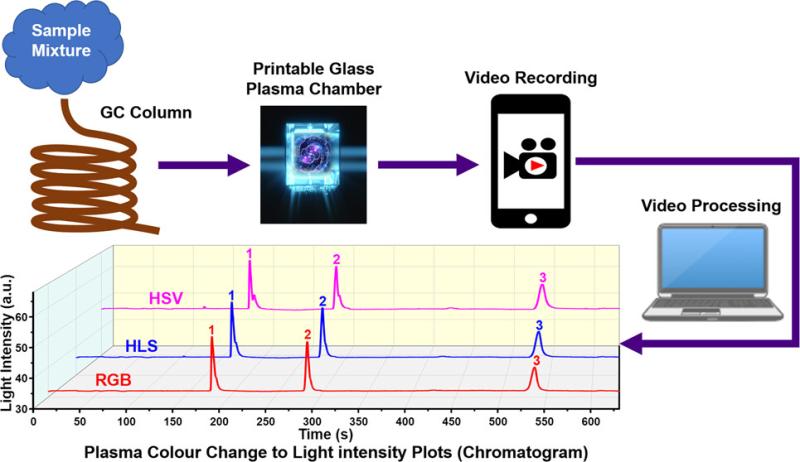Project Detail
As part of my extensive experience in object-oriented programming with Python, I played a pivotal role in developing the μHDBD-PID Live application—a sophisticated software system that integrates photoionization detectors (PIDs) for advanced analytical applications. Utilizing the PyQt5 framework, I engineered a vibrant and dynamic user interface that seamlessly leverages system image sensors to capture and record video, while simultaneously performing real-time analysis on the visual data.
The μHDBD-PID Live application is designed to produce a comprehensive suite of data and graphical outputs essential for PID analysis upon the conclusion of video recording. This includes generating histograms, trend graphs, and other analytical visualizations that facilitate a deeper understanding of the detected volatile organic compounds (VOCs). The system as a whole—which comprises the preliminary experimental apparatus, image sensors, and sophisticated software processing—is collectively known as μHDBD-PID Live. My primary responsibility was the software component, where I focused on integrating the hardware with advanced software functionalities to enhance data collection efficiency and analytical precision.
A significant milestone of this project was its publication in ACS Measurement Science Au on May 30, 2023, under the title "Colorimetric Signal Readout for the Detection of Volatile Organic Compounds Using a Printable Glass-Based Dielectric Barrier Discharge-Type Helium Plasma Detector." This publication not only underscores the scientific merit of the work but also testifies to my ability to combine software development and hardware integration to achieve real-time data analysis and processing. The research was featured on a Journal Citation Reports (JCR) Q1 journal cover, highlighting its impact in the field.
In enhancing the photoionization detector research project, I provided critical software programming and data analysis support that were instrumental in advancing the project's objectives. I developed Python and PyQt5 software that effectively integrated the hardware components with visual analytics, resulting in a significant improvement in data collection efficiency. This integration allowed for automated data acquisition and real-time processing, reducing manual intervention and potential errors.
One of the key features I implemented was a dynamic user interface equipped with real-time video recording and histogram visualization. The UI was designed to be intuitive and user-friendly, enabling users to monitor the PID processes as they occur and analyze data with greater precision. The real-time video recording capability allowed for continuous observation of the detector's response, while the histogram visualization provided immediate insights into the data distribution and trends. This combination of features empowered users to make informed decisions promptly, enhancing the overall effectiveness of the PID system.
